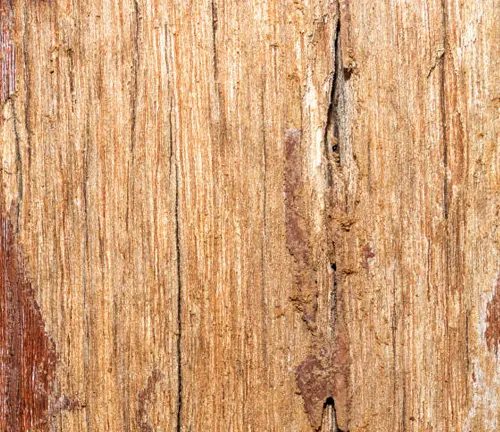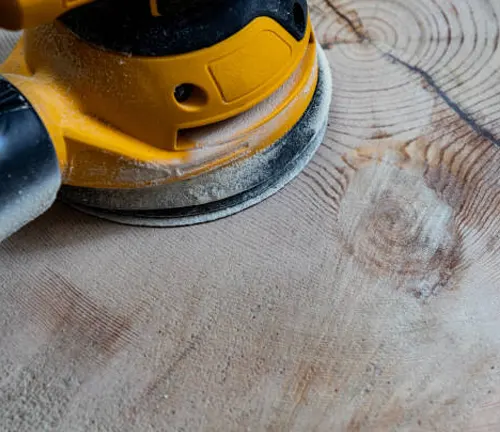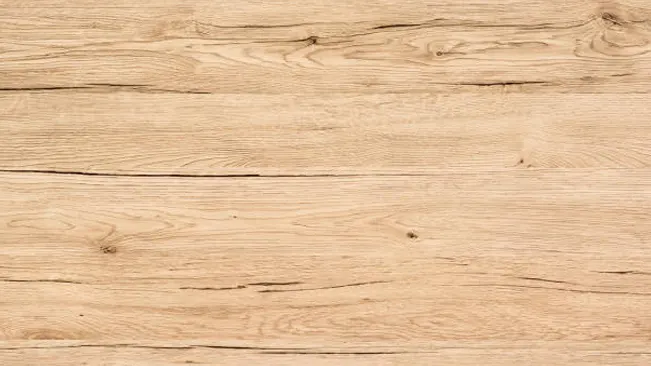Common Wood Defects: Identification and Solutions
- September 25, 2024
- 0 comment
Wood, as a natural material, is widely used in industries like construction, furniture-making, and cabinetry. However, being a product of nature, wood is prone to various defects that affect its quality, strength, and aesthetic appeal. Understanding these defects is crucial for professionals working with wood, helping them choose the right material for their projects and avoid costly mistakes.

This article will cover the most common wood defects, their causes, and how they impact different industries, as well as offer insight into prevention and management techniques.
Natural Wood Defects
Natural wood defects occur during the tree’s growth and result from environmental factors, genetic characteristics, or external damage. These defects can weaken the wood or, in some cases, add visual interest depending on their context.
1. Knots
Knots form where branches once grew from the tree’s trunk, appearing as dark circular patterns within the wood.
They are often considered visually appealing but can affect the wood’s strength and its ability to absorb finishes evenly. Sound knots are solid and don’t affect the structure as much as dead knots, which can fall out and leave holes in the wood.

2. Shakes
Shakes are separations within the wood along the growth rings, caused by internal stress or extreme environmental conditions like freezing. There are three main types:
- Ring Shake: Occurs along a growth ring.
- Heart Shake: Found near the heart of the tree, radiating outward.
- Star Shake: Radiating cracks from the center of the wood. Shakes can significantly reduce the structural integrity of the wood, making it unsuitable for high-load applications.
3. Cracks and Splits
Cracks and splits, also called checks, occur when wood dries unevenly, creating fissures. They compromise the strength of the wood, making it less suitable for use in structural applications.
4. Pitch Pockets
Pitch pockets are small cavities in wood that are filled with resin, commonly found in softwoods like pine.
Although Pitch Pockets do not significantly weaken the structural integrity of the wood, they can pose challenges during woodworking. These pockets can interfere with cutting, staining, and finishing processes, affecting the overall appearance and quality of the final product.

5. Warping
Warping happens when wood dries unevenly, causing it to bend or twist. Common forms of warping include bowing, cupping, twisting, and crooking. Warped wood is often unsuitable for construction or fine woodworking because it can lead to misaligned structures or joints.
Processing-Related Wood Defects
Processing-related defects occur during the sawing, drying, and handling stages. They can often be avoided with proper machinery maintenance and handling procedures.
1. Machine Burn
Machine burn occurs when wood overheats during cutting or sanding, leaving dark, charred areas.
This defect is caused by dull blades, incorrect machine settings, or excessive pressure during processing. Machine burn not only affects the appearance but also creates weak spots that can split.

2. Wane
Wane refers to the lack of wood or bark on the edge of a board, often caused by cutting too close to the tree’s edge. While wane doesn’t significantly affect the wood’s strength, it can diminish its aesthetic appeal and make it difficult to use in applications where uniform edges are needed.
3. Surface Checks
Surface checks are small cracks that form on the wood’s surface when it dries too quickly.
These cracks can diminish the wood’s aesthetic appeal and interfere with the application of finishes. Stains and sealants may not penetrate evenly, leading to an uneven appearance that impacts the overall quality of the final product.

4. Stains
Stains can develop from exposure to fungi, chemicals, or minerals. Common stains include blue stain, caused by fungal growth, and iron stain, which occurs when wood tannins react with metal. Stains often affect the wood’s aesthetic value but may not compromise its structural integrity.
Biological Wood Defects
Biological defects arise from living organisms like insects and fungi. These defects often reduce the quality of the wood and make it unsuitable for use without treatment.
1. Insect Damage (Boring Holes):
Wood-boring insects like termites, powderpost beetles, and carpenter ants can create small holes and tunnels in the wood. This damage can severely weaken the wood, rendering it unfit for structural applications. Insect-infested wood should be treated or discarded to prevent further deterioration.
2. Fungal Decay (Rot):
Fungi thrive in moist environments and cause wood to rot over time. There are three main types of rot:
- Brown Rot: Breaks down cellulose, leaving behind brittle, brown wood.
- White Rot: Breaks down both cellulose and lignin, leaving a spongy texture.
- Soft Rot: Develops in extremely wet conditions and progresses slowly. Rot significantly weakens the wood and is often irreversible, requiring replacement of the affected wood.
Prevention and Management of Wood Defects
Preventing and managing wood defects involves proper care during harvesting, drying, storage, and treatment. These practices can reduce the occurrence of defects and improve the wood’s overall quality.
Proper Drying and Storage Techniques
Wood should be dried slowly and evenly to prevent warping, splitting, and surface checks. Kiln drying allows for precise moisture control, while air drying requires careful stacking and protection from moisture. Once dried, wood should be stored in a controlled environment to avoid absorbing excess moisture.
Regular Inspection and Treatment
Periodic inspection of stored wood can help detect early signs of biological defects like insect damage or fungal decay. Treatment with wood preservatives can prevent biological damage and prolong the wood’s lifespan. In construction, managing moisture and ensuring proper ventilation can reduce the risk of rot and insect infestation.
Selecting High-Quality Wood
When sourcing wood for construction or fine woodworking, selecting high-quality wood with minimal defects is essential. Grading systems classify wood based on the presence of defects, allowing professionals to choose the right wood for their needs.
Impact of Wood Defects on Applications
Wood defects can significantly impact various industries, from construction to furniture making. Understanding how defects affect wood’s performance in different applications is crucial for choosing the right material.

1. Construction Industry
In construction, structural integrity is paramount. Defects like knots, shakes, and warping can weaken the wood, making it unsafe for load-bearing structures. Builders must carefully inspect wood for these defects to ensure safety and stability.
2. Furniture Making
Aesthetics are critical in furniture making, where defects like stains, knots, or cracks can reduce the visual appeal of the final product. Woodworkers often need to work around defects or select high-grade wood to produce high-quality, durable furniture.
3. Wood Finishing
Wood defects can affect the finishing process, particularly when the wood’s surface has cracks, knots, or stains. Inconsistent absorption of stains and finishes can lead to an uneven appearance, requiring additional work to correct.
Conclusion
Understanding common wood defects is essential for anyone working with wood, whether in construction, woodworking, or furniture making. While some defects, such as knots or pitch pockets, are natural and can be worked with, others, like warping, rot, or insect damage, can compromise the structural integrity and appearance of the wood.
By recognizing these defects, professionals can make informed decisions when selecting wood for their projects, ensuring the best possible outcome. Moreover, using proper storage, drying, and treatment techniques can prevent many defects, preserving the quality of the wood and maximizing its value across various industries.
Frequently Asked Questions (FAQ’s)
- What are wood defects?
Wood defects are irregularities in wood caused by natural growth, environmental factors, or processing errors, which affect its quality and usability. - What causes natural wood defects?
Natural wood defects, such as knots, shakes, and warping, arise from a tree’s growth patterns, environmental stresses, or internal tree conditions. - How does warping occur in wood?
Warping occurs when wood dries unevenly, causing it to bend or twist. This is often due to uneven moisture content. - What are knots in wood, and how do they affect it?
Knots are areas where branches grew, creating circular grain patterns. They may reduce the strength of the wood or cause finishing challenges. - What is the difference between surface checks and splits?
Surface checks are small cracks on the wood’s surface caused by uneven drying, while splits are larger cracks that go through the wood, often weakening it. - How can wood defects impact construction projects?
Defects like cracks, knots, and warping can compromise the structural integrity of wood, making it less suitable for load-bearing structures in construction. - What are processing-related wood defects?
These defects, like wane, machine burns, and surface checks, result from improper handling, cutting, or drying of the wood during manufacturing. - How can insect damage affect wood quality?
Insects like termites and beetles bore holes into wood, weakening its structure and making it unsuitable for use in load-bearing or aesthetic applications. - What is wood rot, and how can it be prevented?
Wood rot is caused by fungi in moist environments. Preventing it requires proper moisture management and the use of preservatives. - How can I reduce wood defects in woodworking projects?
Proper wood selection, controlled drying, and treating wood with preservatives can help minimize defects and enhance its durability and appearance.

Edward Smith
Forestry AuthorWoodworking is about more than crafting; it's a harmonious connection with nature, mastering tools, and preserving our environment. I'm here to share my knowledge and experiences with you, forging a future where we can embrace wood's beauty and utility while safeguarding our forests' health and diversity.













Leave your comment